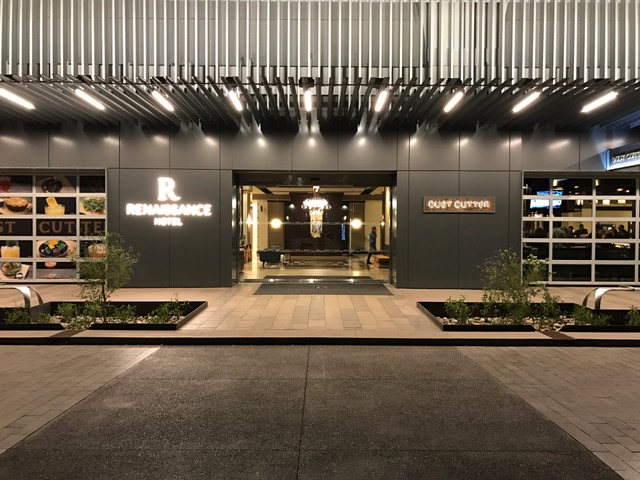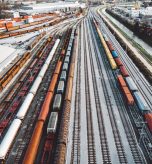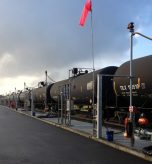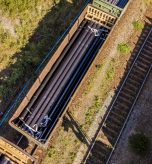Look, I’ve been in the rail and manufacturing game for over 25 years now, and if there’s one thing I’ve learned after establishing operations across three continents, it’s that manufacturing site selection can make or break your U.S. expansion. With the Trump administration’s renewed “America First” policies and already-implemented tariff increases on Chinese and European goods, many of you are considering a U.S. manufacturing presence—and you’d better get rail logistics services right from day one.
I’m not writing this to impress academics or consultants. This is practical advice from someone who’s made the mistakes so you don’t have to. When our company expanded into the Southeast five years ago, we ignored rail considerations until it was too late. The retrofit cost us millions and set production back six months. Don’t repeat our errors.
Why Rail Should Be Your Transportation Backbone
Let me be blunt: if you’re shipping bulk materials or finished goods more than 500 miles in the U.S., and you’re not using rail as part of your manufacturing logistics strategy, you’re leaving money on the table. Period.
Rail costs roughly half what trucking does for long hauls, and with diesel prices up 22% since last year and the persistent driver shortage showing no signs of improvement, that gap is widening. One of our plants in Ohio moves 65% of its output by rail, saving us approximately $3.4 million annually compared to our truck-dependent New Jersey facility with similar production volumes.
The environmental calculus is equally compelling. Our rail supply chain optimized facilities generate about 75% less carbon emissions in transportation. With the SEC’s climate disclosure rules now in effect (though currently facing legal challenges from the new administration) and carbon taxes potentially on the horizon in several blue states, this isn’t just environmental window dressing—it’s financial risk management.
What many of my international colleagues miss is the resilience factor. During the chaos of 2021-22, our rail-connected facilities maintained 93% on-time delivery while our truck-dependent sites struggled to break 70%. When winter storms paralyzed Texas highways in January, our rail operations continued with minimal disruption. That reliability is worth its weight in gold when you’re trying to establish credibility with new U.S. customers.
Site Selection: Getting It Right the First Time
Here’s what I tell every executive on my team contemplating a new manufacturing site: your transportation strategy must lead your manufacturing site selection process, not follow it. And in today’s America, that means understanding rail infrastructure at a granular level.
First things first—you want access to a Class I railroad if possible. We work extensively with both Norfolk Southern and CSX, and the difference in service capability between them and regional railroads is substantial. However, don’t dismiss short-line railroads entirely—some like Genesee & Wyoming offer excellent service and connection to multiple Class I networks. Their Savannah operation gives us flexibility that’s proven invaluable with recent port congestion issues.
The proximity to intermodal terminals has become even more critical with the previous infrastructure investments continuing to roll out, albeit with some modifications under the new administration. We prioritize sites within 50 miles of major terminals, which has proven to be the sweet spot between access and land costs. The Commerce Department’s recent adjustments to inland port modernization priorities are creating new opportunities—keep an eye on their grant announcements expected this summer.
Don’t overlook existing rail spurs and infrastructure. When we established operations in Pennsylvania, acquiring a former steel facility with existing rail infrastructure saved us $4.2 million in development costs and accelerated our timeline by nine months. With the new administration’s focus on revitalizing traditional manufacturing, these opportunities are more financially compelling than ever.
Regional Considerations: Where to Place Your Bets
The American manufacturing supply chain landscape isn’t monolithic, and current trade policies and infrastructure investments are reshaping traditional advantages. Let me share some ground-level insights from our market analysis consultants:
The Southeast’s Growing Advantage
I’ve watched the Southeast transform from a textile legacy region to a manufacturing powerhouse. Norfolk Southern’s Crescent Corridor investments have created an intermodal spine that fundamentally changes the logistics optimization equation. Our Tennessee facility, located near one of their newest intermodal terminals, achieves transit times to the Northeast that would have been impossible five years ago.
The region’s port connectivity is exceptional. With the recently completed Savannah Harbor Expansion Project, rail connections from the port have never been more efficient. We’re moving containers from dock to our Georgia facility in under 24 hours—a competitive advantage our European operations can’t match.
The semiconductor funding is also disproportionately flowing to southeastern projects, though with the current administration’s recalibration of those programs, there’s increased focus on traditional semiconductor manufacturing rather than advanced research. If your supply chain touches electronics, positioning near these emerging clusters could be advantageous, especially as the tighter Buy American provisions take full effect this year.
The Evolving Midwest Picture
Don’t write off the traditional industrial supply chain management belt. The infrastructure funding directed toward Chicago’s rail congestion issues is continuing, and we’re already seeing improvements in terminal dwell times. Our Michigan facility, which had historically suffered from Chicago-related delays, has seen average transit time reliability improve by 22% over the past 18 months.
The region’s exceptional rail density still offers unmatched connection options. When container shortages hit last year, we were able to shift seamlessly between four different intermodal providers without changing our production location or final destinations.
The Midwest is seeing renewed interest with the Trump administration’s focus on traditional manufacturing sectors and domestic steel production. The recent steel tariff expansions have created some challenges for our import-dependent facilities, but domestic steel-consuming operations in this region are seeing potential advantages.
A word of caution: the Midwest’s energy costs are increasing faster than national averages. We’re investing in on-site generation at two facilities to offset this trend, but factor these costs into your long-term calculations.
The Texas-Mexico Connection
With the current administration’s revisions to the USMCA and increased tariffs on Chinese goods, the Texas corridor is becoming increasingly strategic. If you’re currently manufacturing in Mexico or considering it, a complementary Texas operation connected by rail makes tremendous sense—both as a hedge against policy changes and as a way to leverage “Made in USA” for certain market segments.
The Mexican rail system’s interoperability with U.S. carriers has improved dramatically. Our component flow between Monterrey and Dallas now moves as smoothly as domestic shipments, though customs documentation remains cumbersome. The current administration’s border security focus has produced some delays, but dedicated rail crossings have been less affected than truck routes.
Gulf ports are also expanding rail capabilities aggressively. After years of lagging behind East and West Coast facilities, Houston’s new near-dock rail transfer facility has cut our dwell times by 60%. With expanded Panama Canal capacity, these Gulf connections will become even more valuable for Asian imports seeking to avoid West Coast congestion and labor disruptions.
Making Rail Work: Practical Implementation Advice
Once you’ve selected a region, here’s my hard-earned advice on implementation from our rail logistics consultants:
Leverage Railroad Economic Development Programs
Every Class I railroad maintains an economic development team specifically focused on attracting new facilities to their lines. Engage them early—they’re an invaluable free resource. CSX’s program helped us identify three potential sites we had overlooked and facilitated connections with state economic development officials that resulted in an additional $3.7 million in incentives for rail infrastructure.
The new federal funding priorities are still emerging, but there’s continued emphasis on freight rail investment. The CRISI (Consolidated Rail Infrastructure and Safety Improvements) program remains active, and we successfully partnered with a short-line railroad to secure $5.2 million for infrastructure improvements that directly benefited our facility while reducing our capital outlay.
Don’t be shy about negotiating volume commitments for preferential rates. When establishing our Arizona operation, we committed to 1,200 carloads annually in exchange for rates approximately 12% below standard tariffs. The certainty was as valuable to the railroad as the volume, and we’ve maintained this preferential position for seven years.
Design for Rail from Day One
I can’t stress this enough: retrofitting rail access into an existing facility is exponentially more expensive than incorporating it during initial design. Our North Carolina facility was designed around rail movement, with receiving, processing, and shipping aligned with the rail spur orientation. The efficiency difference compared to our retrofitted Virginia site is stark—about 22% lower handling costs and 35% less yard congestion.
Secure sufficient land for future expansion. Rail operations require space for car storage, switching, and transloading. We’ve standardized on a minimum 20-acre buffer for rail-served facilities, which has proven sufficient even as operations expanded. Land adjacent to rail lines typically commands a premium, but it’s insurance against future constraints.
One counter-intuitive lesson: don’t overinvest in rail infrastructure initially. Start with the basics and expand as volumes justify. Our Minnesota facility began with a simple spur handling 2-3 cars weekly. As volumes grew, we incrementally expanded to a loop track capable of handling unit trains. This phased approach preserved capital while allowing us to validate the business case for each expansion.
Embed Rail Technology in Your Supply Chain Systems
The technology gap between trucking and rail is closing rapidly. Our supply chain technology now integrates rail car tracking APIs from all major carriers, giving us the same visibility we’ve had with trucks for years. This integration has reduced our safety stock requirements by 17% across rail-served facilities by providing reliable ETA predictions.
Machine learning tools have dramatically improved our ability to optimize mode selection. Our custom modal allocation engine evaluates each shipment against 23 parameters, including current fuel prices, capacity constraints, and weather forecasts. The result has been a 9% reduction in overall transportation costs while improving on-time delivery.
With carbon reporting requirements still in flux under the new administration, we’re taking a pragmatic approach. Our systems track emissions for all shipments, allowing us to quickly adapt to whichever regulatory framework emerges. Some of our customers, particularly European ones, require this data regardless of U.S. policy, so the capability serves multiple purposes.
A Final Word: The Policy Wild Card
I’d be remiss not to address the elephant in the room: U.S. policy volatility. The Trump administration has already implemented significant tariff increases affecting global supply chains. Chinese imports face duties of up to 60% in some categories, and European steel and aluminum are back under tariff pressure. These changes are reshaping the economics of manufacturing location decisions almost monthly.
My recommendation: build flexibility into your network. Our multi-region approach with rail connectivity between facilities has allowed us to adjust production allocation as policies evolve. When the latest round of tariffs hit, we shifted production of certain components between facilities to optimize around changing cost structures—flexibility that saved us millions.
The administration’s infrastructure priorities are still developing, but early indications suggest a focus on traditional infrastructure over climate-oriented investments. This could accelerate improvements to freight rail corridors, particularly those serving energy and heavy manufacturing. Our due diligence consultants are tracking these developments closely, as they may create opportunities for strategic site selection.
If you take one thing from this article, let it be this: in today’s manufacturing environment, transportation strategy—particularly rail strategy—isn’t a tactical consideration to be delegated down the organization. It’s a C-suite imperative that will determine your ability to compete in the American market. Get it right, and you’ll have a sustainable advantage. Get it wrong, and you’ll be playing catch-up for years.
I’ve shared our lessons so you don’t have to learn them the hard way. The rail network in America is one of its greatest competitive assets—leverage it properly through effective supply chain optimization services, and your U.S. expansion has a much higher probability of success. Good luck, and I’ll see you on the rails.















